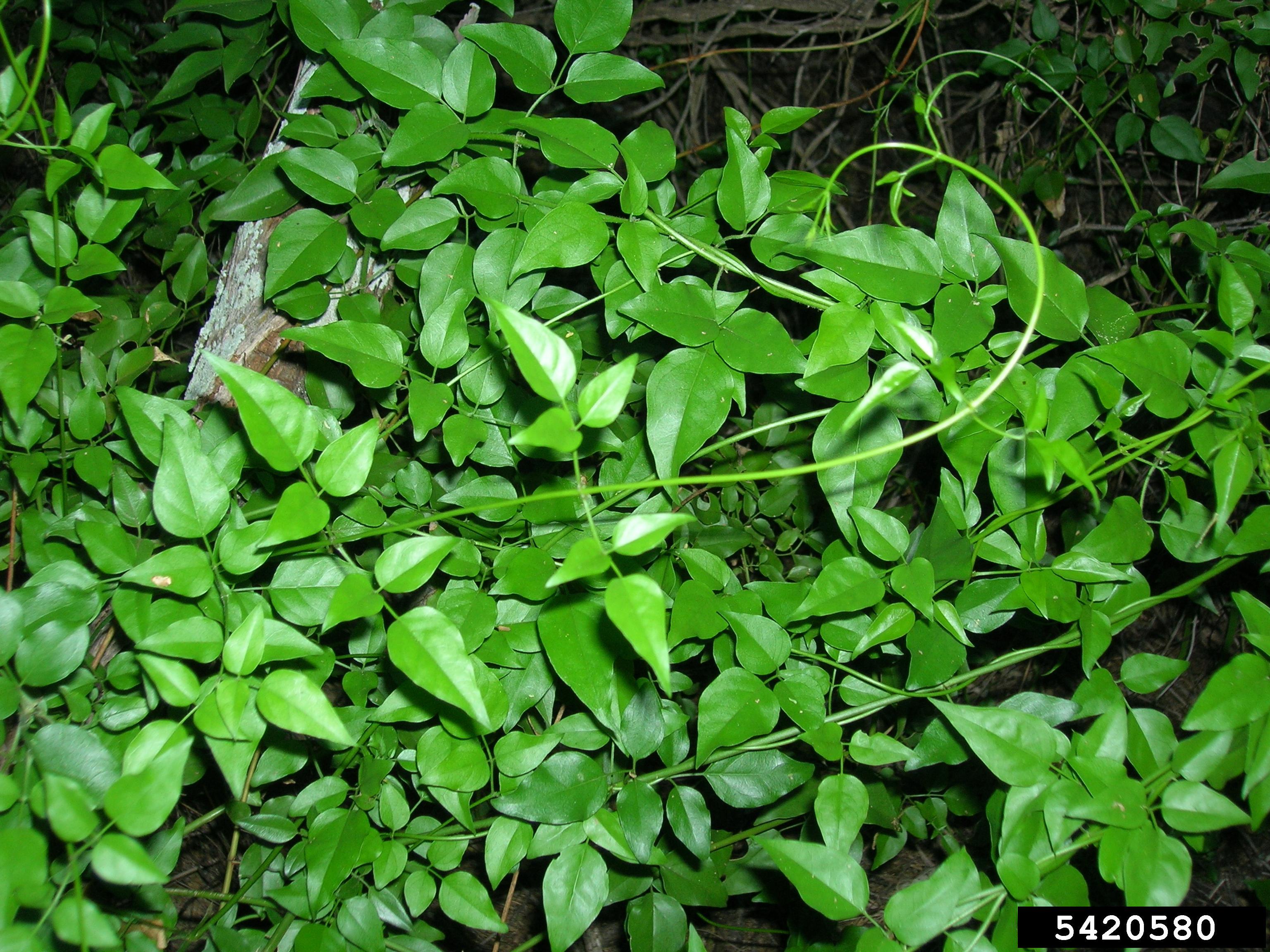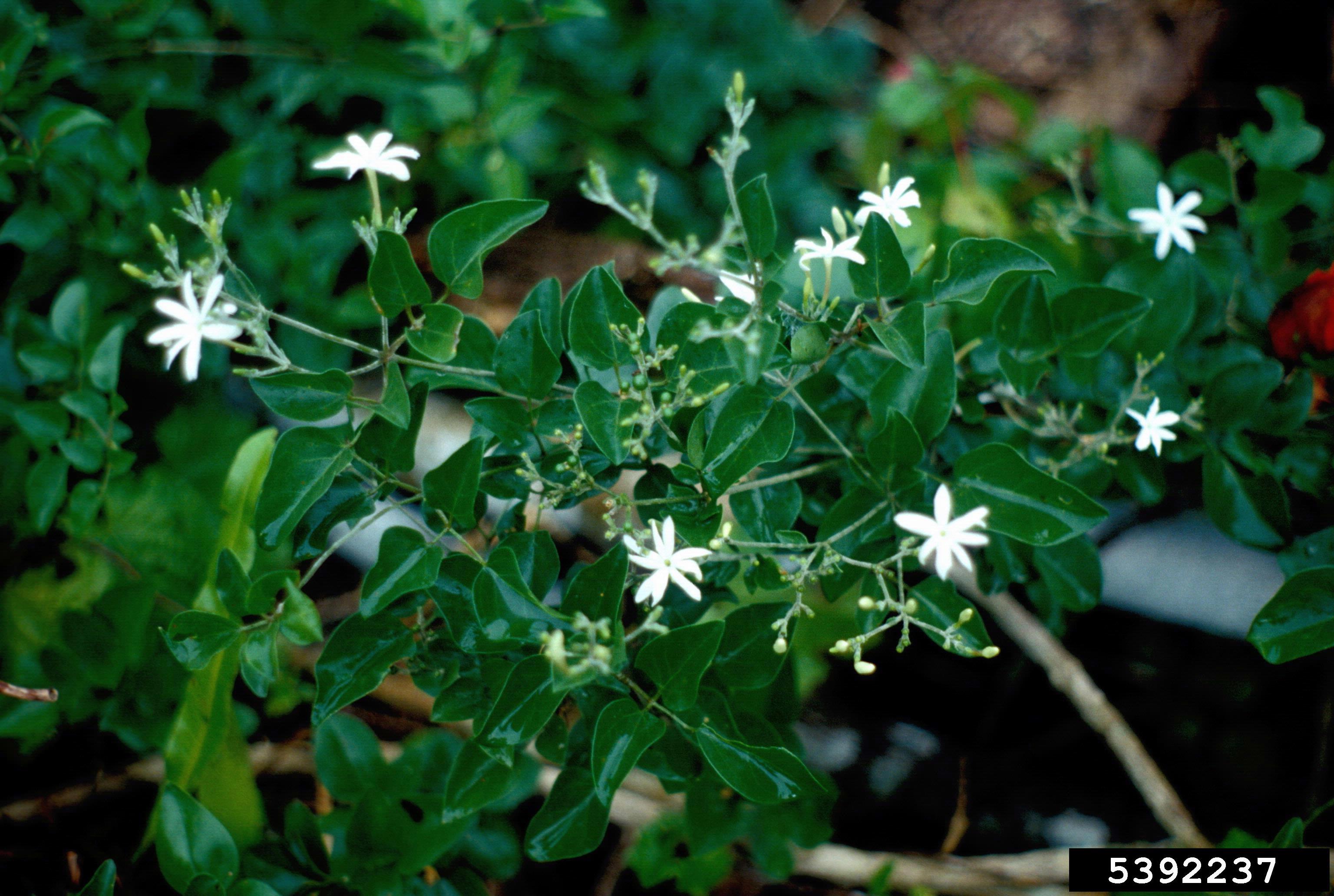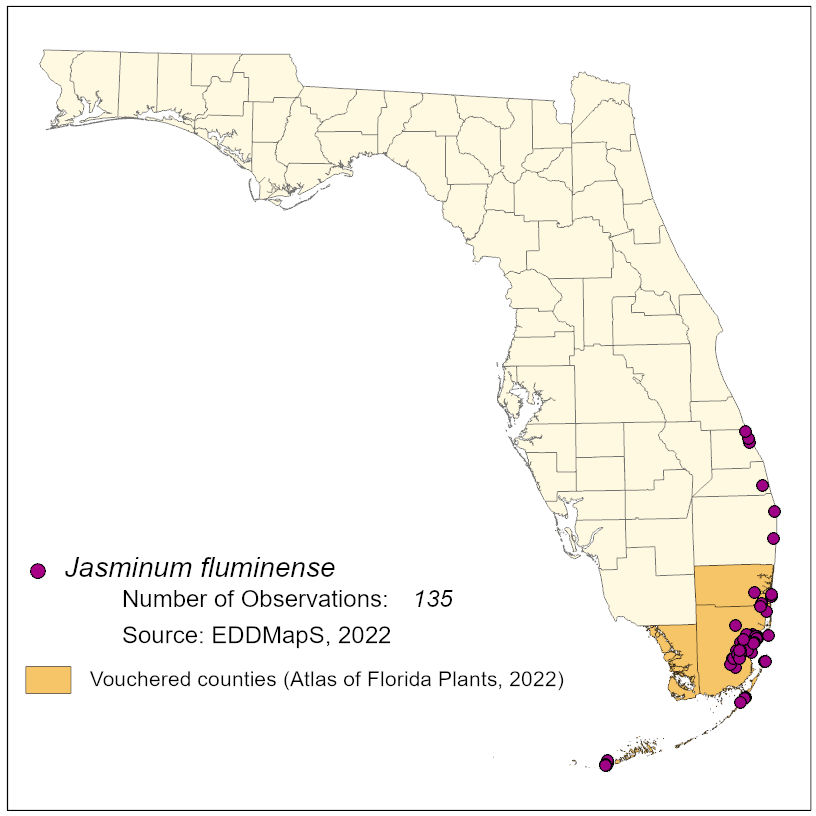Common Name: jasmine
Family: Oleaceae
Common Synonyms: none
USDA Hardiness Zone: 9b-11
Growth Habit: Vine
Origin: Tropical West Africa
FISC Category: 1
FDACS Listed Noxious Weed: No
Introduction Date: early 1920's
IFAS Assessment:


Evergreen, woody vine which climbs into tree canopies. Stalked leaves are opposite and trifoliate, with the terminal leaflet larger (to 7 cm long) than the other two (to 5 cm). Leaflets pubescent with pointed tips. Flowers white and fragrant, blooming at night in clusters at leaf axils, petals fused into a narrow tube with 5-7 terminal lobes in a star-shape. Fruit is a small, fleshy, round, black berry.
Dardwood forests, disturbed areas
Can climb into the tree canopy of mature forests. Bird and mammal dispersed, produces large number of highly germinable seeds.

Note: Retreatment often necessary, best if runners are pulled back to main stem and then cut. Jasmines produce a large number of bird- and mammal-dispersed seeds with very high germination, highly invasive. [IFAS]
Dave's Garden. 2014. PlantFiles: Brazilian jasmine, Jasminum fluminense. http://davesgarden.com/guides/pf/go/126993/. Accessed on June 20, 2014.
Langeland, K.A., H.M. Cherry, C.M. McCormick, K.C. Burks. 2008. Identification and Biology of Non-Native Plants in Florida's Natural Areas-Second Edition. IFAS Publication SP 257. University of Florida, Gainesville, Florida.
Langeland, K.A., J.A. Ferrell, B. Sellers, G.E. MacDonald, and R.K. Stocker. 2011. Integrated management of non-native plants in natural areas of Florida. EDIS publication SP 242. University of Florida, Gainesville, Florida.
Wunderlin, R. P., and B. F. Hansen. 2008. Atlas of Florida Vascular Plants (http://florida.plantatlas.usf.edu/).[S. M. Landry and K. N. Campbell (application development), Florida Center for Community Design and Research.] Institute for Systematic Botany, University of South Florida, Tampa.